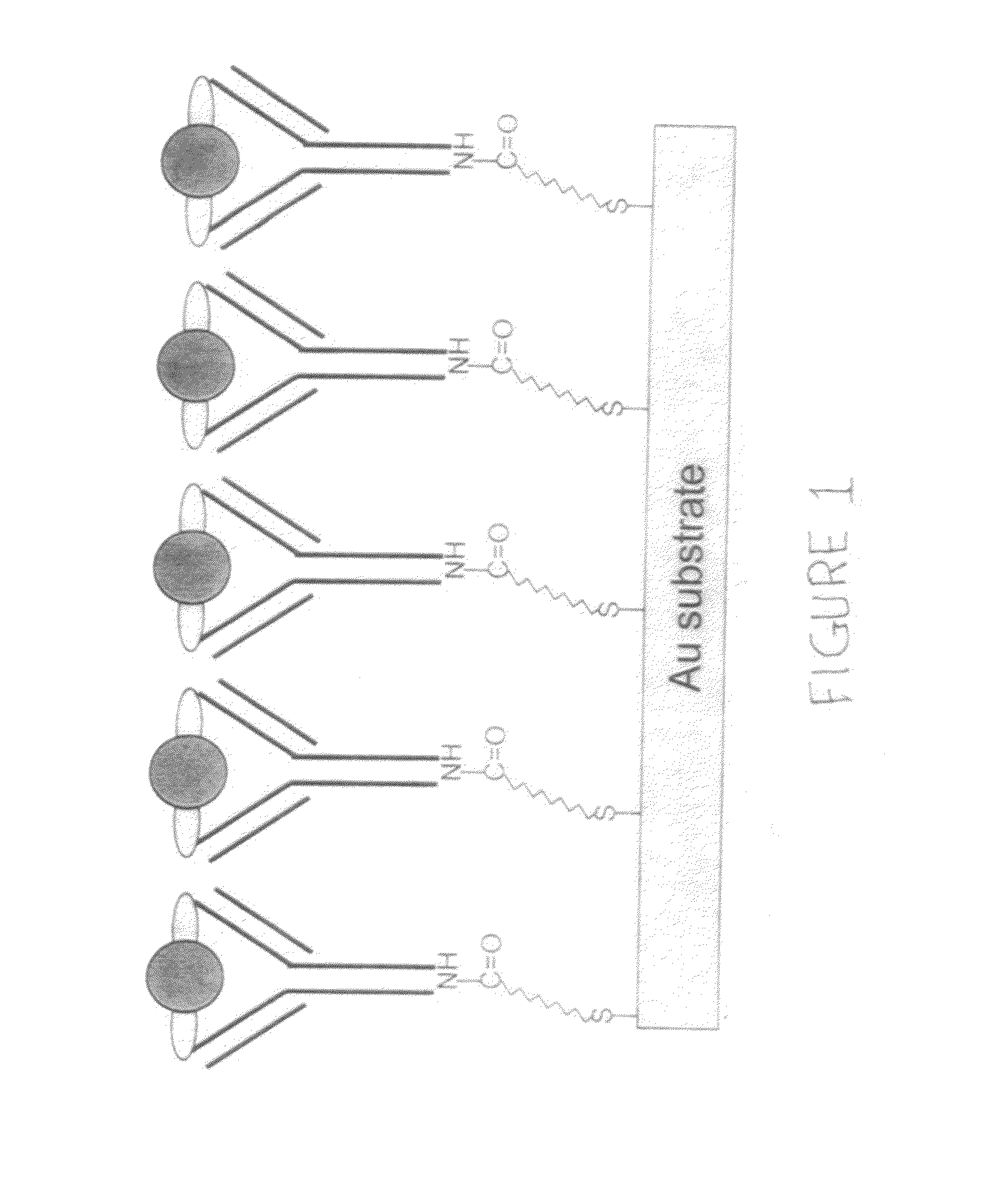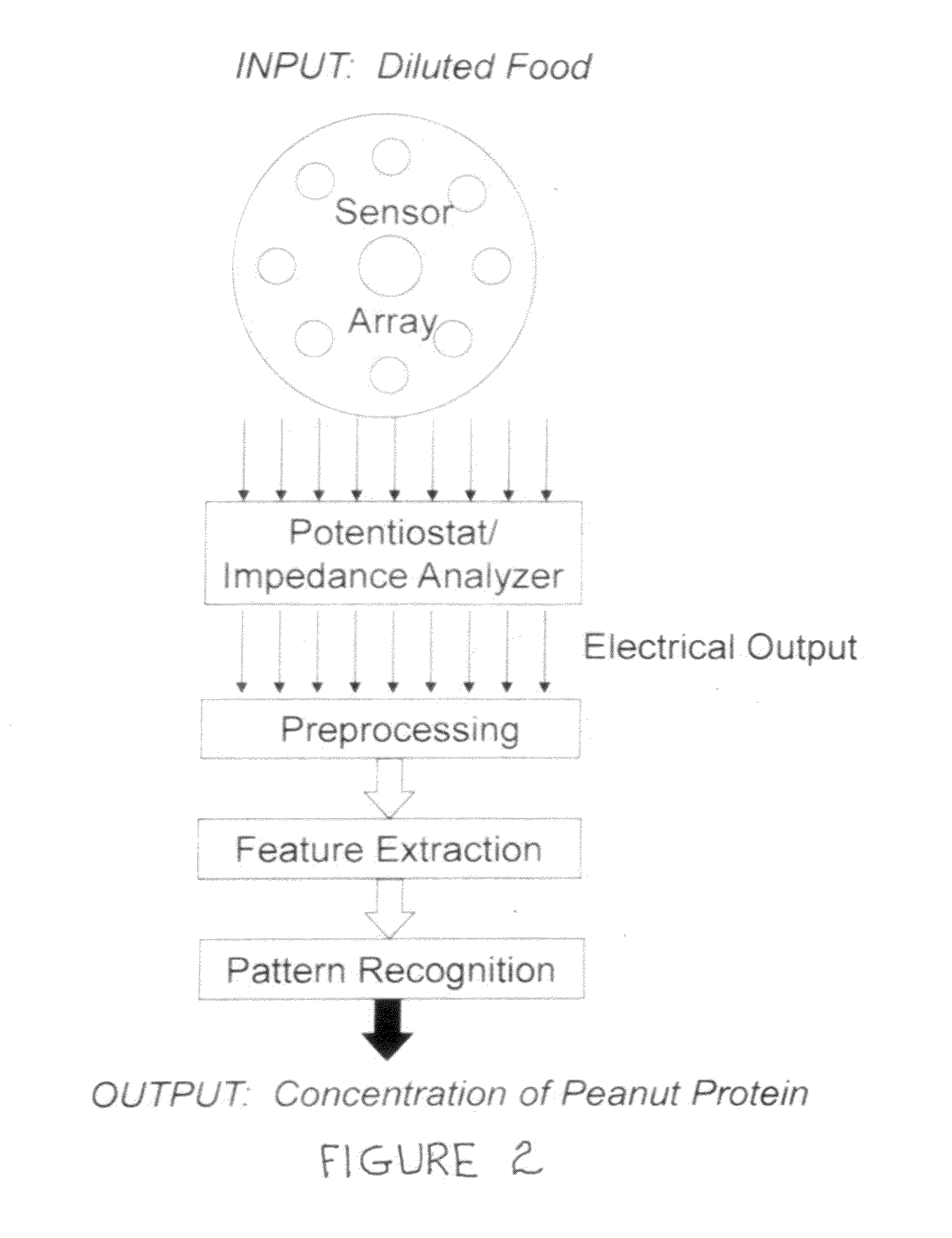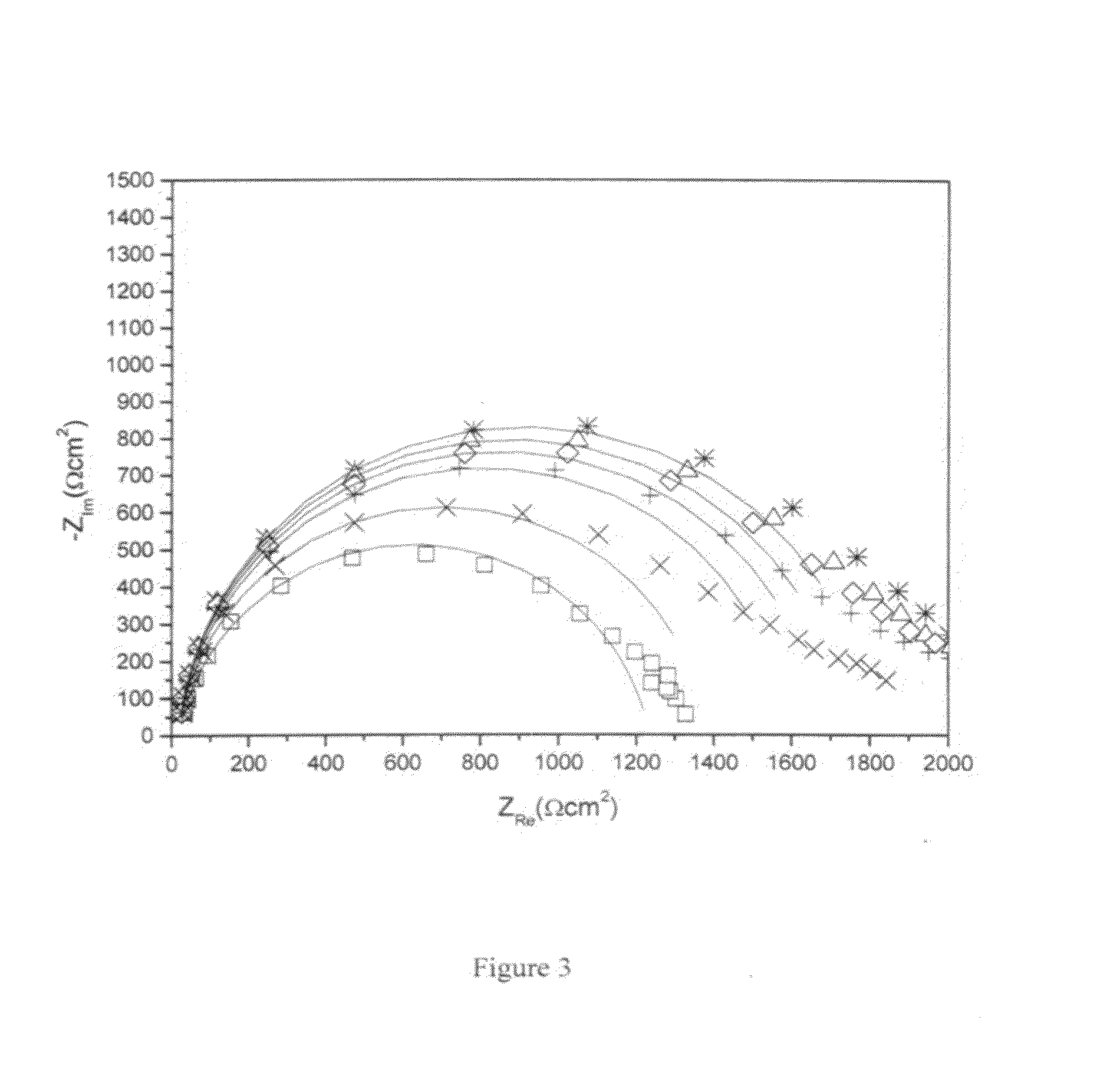Bioelectronic tongue for food allergy detection
a technology of food allergen detection and bioelectronic tongue, which is applied in the field of detection of food allergens, can solve the problems of food allergens, present serious public health problems, and often inadvertent exposure to peanut allergens, and achieve the effect of reducing classification errors
- Summary
- Abstract
- Description
- Claims
- Application Information
AI Technical Summary
Benefits of technology
Problems solved by technology
Method used
Image
Examples
Embodiment Construction
[0029]FIG. 1 represents the desired biomolecular recognition process between an antibody and a food protein allergen that can occur at an individual electrode within the bioelectronic tongue. FIG. 2 illustrates the flow of detecting a food allergen from a sample with a bioelectronic tongue, which contains many such electrodes. The first step is providing a diluted food sample 10. The reason for diluting the sample will be understood in the detailed discussion below. The sample(s) are made part of a sensor array 12. The samples are detected by a potentiostat / impedance analyzer which provides an electrical output 14 to a preprocessing portion 14. The feature extraction 16 selects data from the output of the preprocessing portion 14. The output of feature extraction 18 portion provides data to a pattern recognition portion 20 that determines the concentration of a food allergen within the sample. The concentration of the allergen of interest may be displayed on a display device (not sh...
PUM
| Property | Measurement | Unit |
|---|---|---|
| concentrations | aaaaa | aaaaa |
| concentrations | aaaaa | aaaaa |
| concentrations | aaaaa | aaaaa |
Abstract
Description
Claims
Application Information
 Login to View More
Login to View More - R&D
- Intellectual Property
- Life Sciences
- Materials
- Tech Scout
- Unparalleled Data Quality
- Higher Quality Content
- 60% Fewer Hallucinations
Browse by: Latest US Patents, China's latest patents, Technical Efficacy Thesaurus, Application Domain, Technology Topic, Popular Technical Reports.
© 2025 PatSnap. All rights reserved.Legal|Privacy policy|Modern Slavery Act Transparency Statement|Sitemap|About US| Contact US: help@patsnap.com



